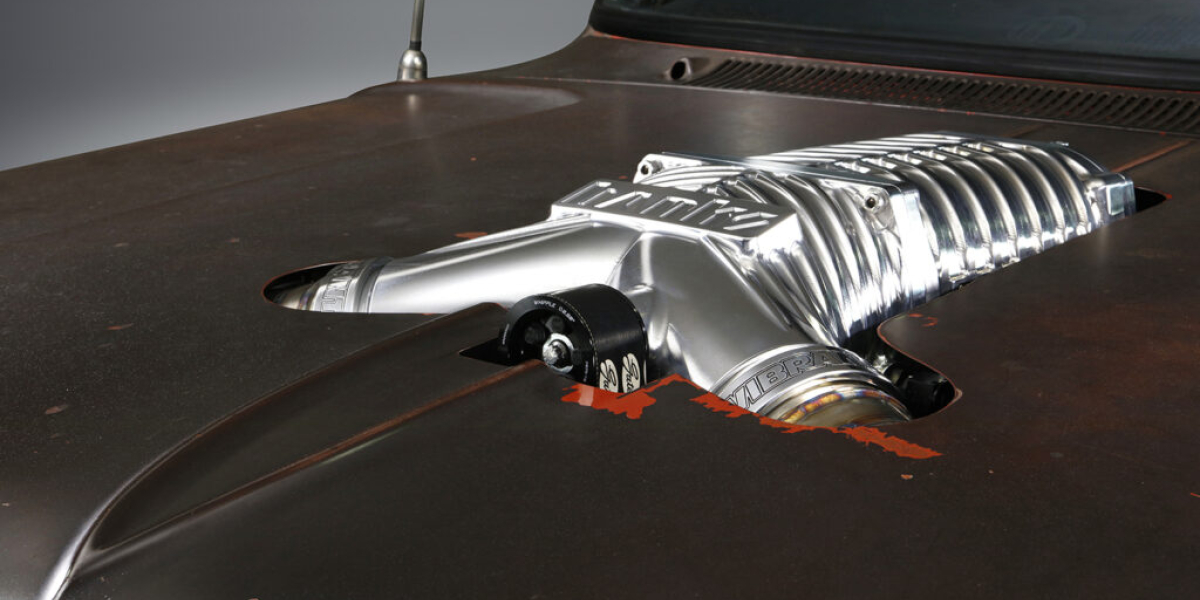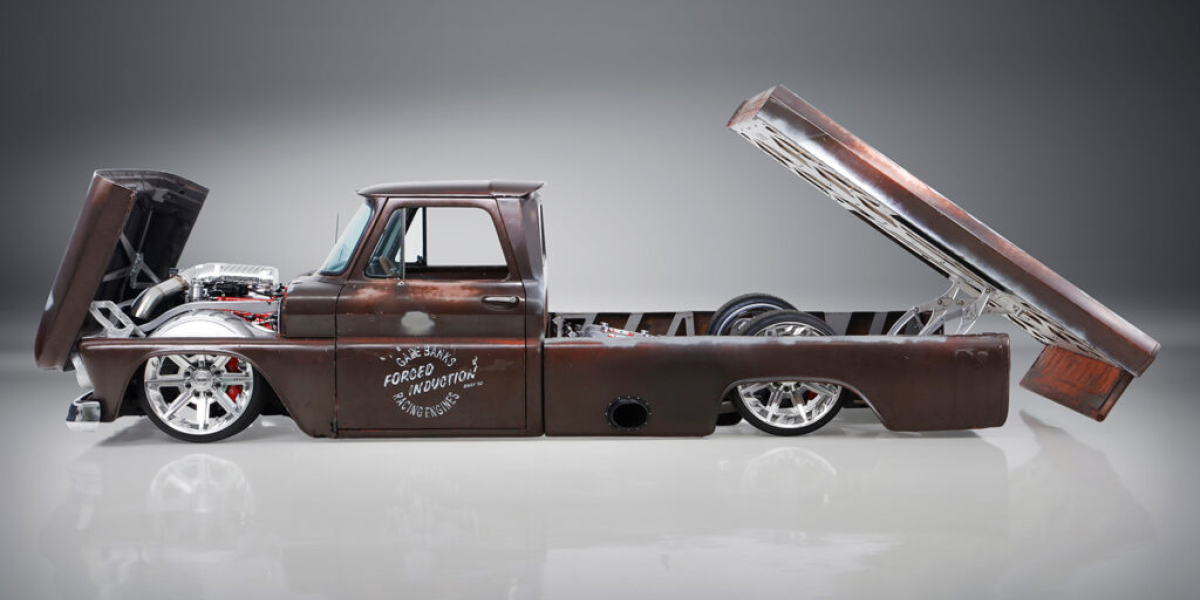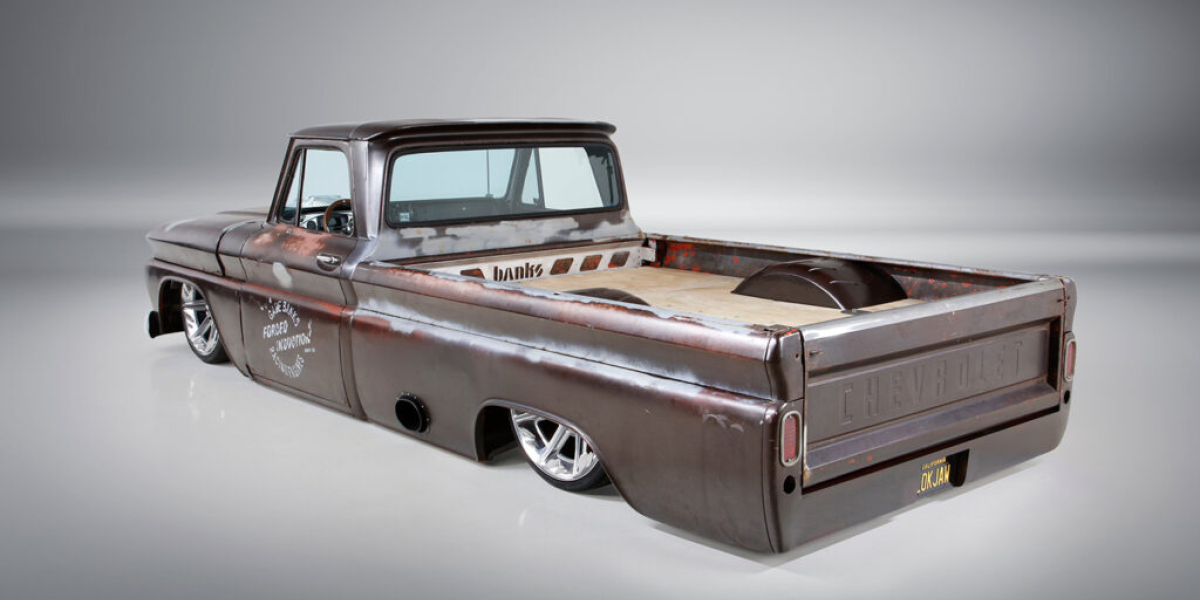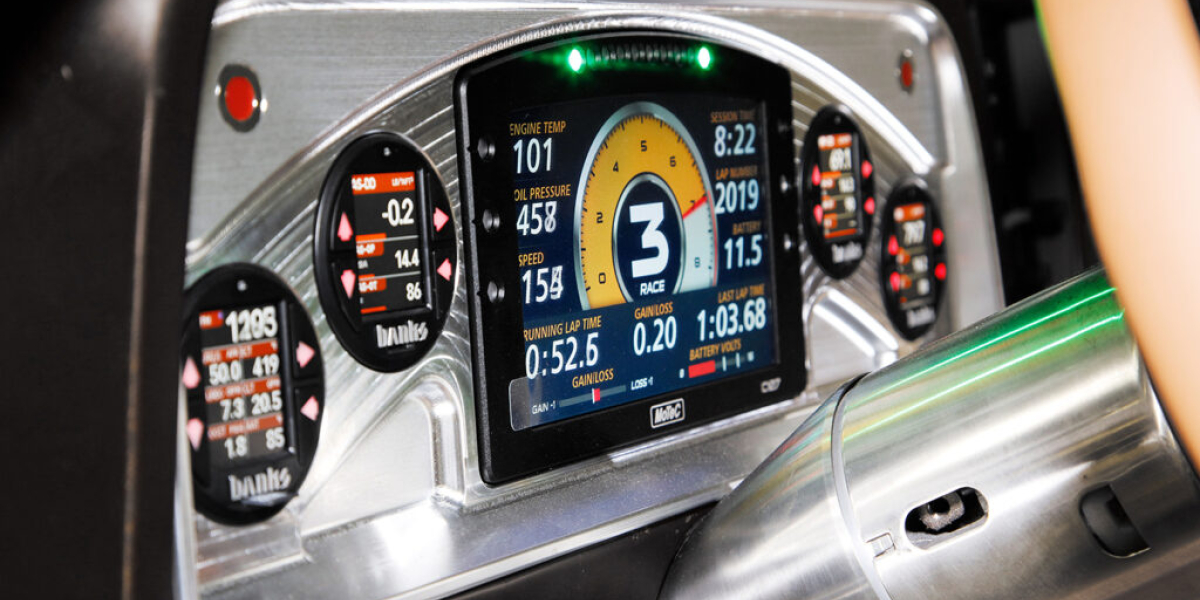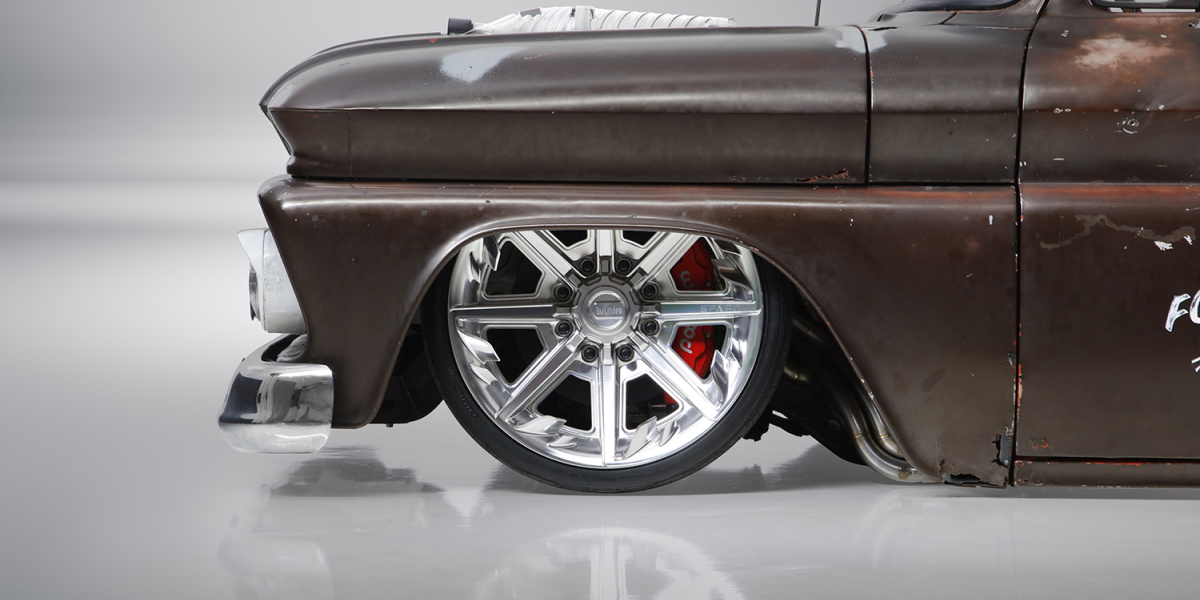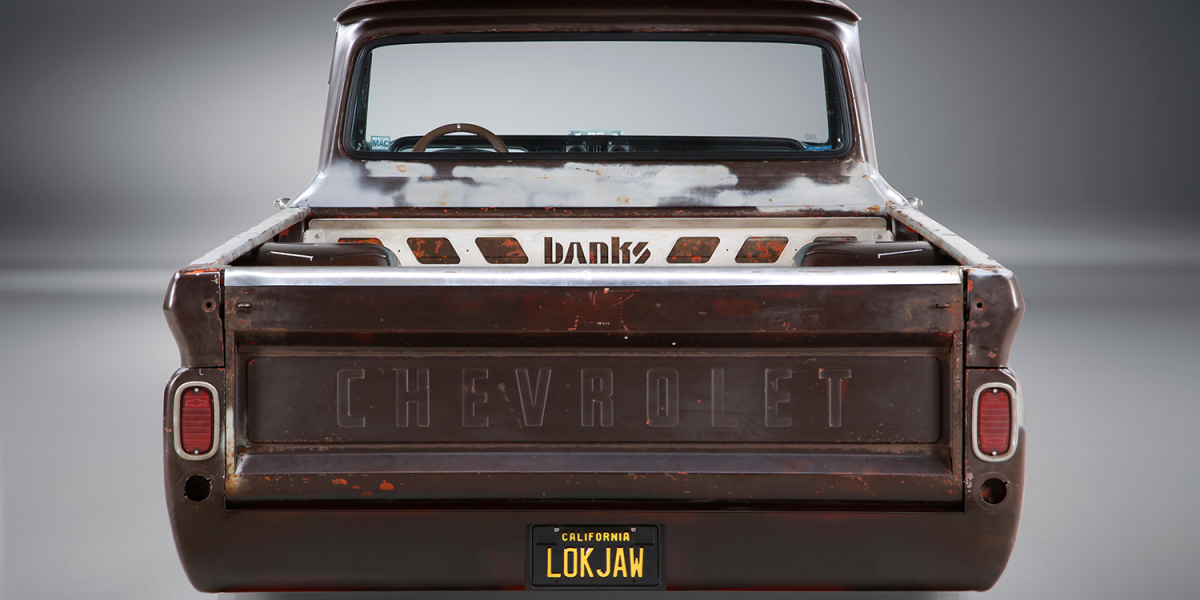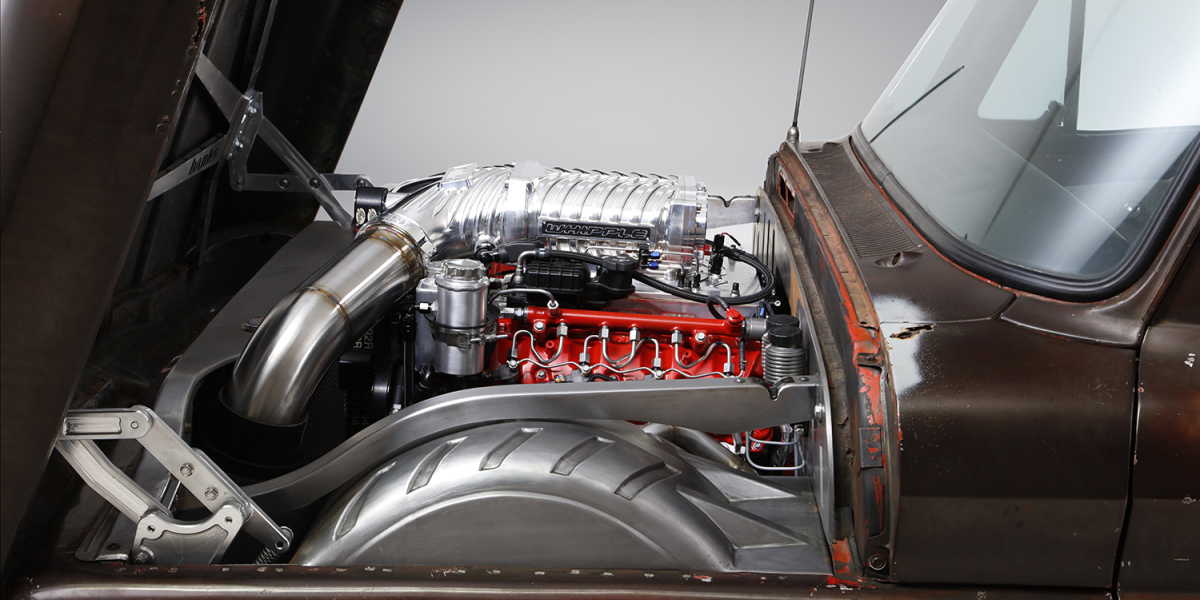Lokjaw The Supercharged Diesel 66 Chevy C20
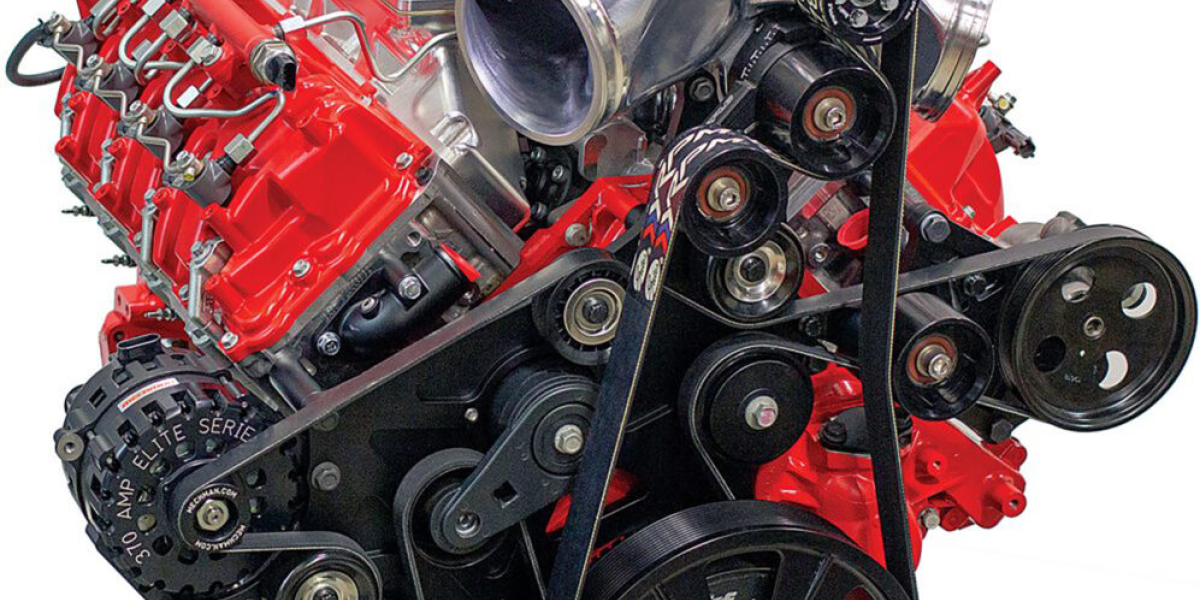
After its unveiling at the 2021 SEMA show, www.dieselarmy.com introduced the world to Gale Banks’ LokJaw, a supercharged Diesel 66 Chevy C20. It is an awesome truck built by Banks Power. To say it received a lot of attention is an understatement. It has been a long-term project with a host of engineering incorporated into it and has a solid crew at the helm. Watching the truck come together and witnessing the changes its gone through has been impressive. However, we finally get to hear it fire for the first time, and its nothing short of impressive.
Building a custom truck of this calibre takes a lot of time and attention to detail, which clearly shows here. In the above video, you get a quick glimpse at the wiring involved. This includes custom-built harnesses, distribution blocks, and monitors on the dash. Speciality harnesses were needed to allow communication between all four iDash modules, transmission control module, MoTeC power distribution modules and M142 engine control module. As well as all other onboard electronics. I spoke with Jay Tilles, brand manager at Banks Power, and asked about challenges getting everything to communicate.
There is no turbo, but the billet blower pokes through the stock hood.
Getting the MoTeC ECM, ATS translator, and GM TCM talking was no easy feat, he affirms. Luckily, we have a talented group of calibration engineers with a great depth of knowledge working with MoTeC. In the end, its clear everything powers up and operates as it should. The quad iDash setup provides 100 channels of data logging. Then, the MoTeC display provides engine vitals front and centre for the pilot. Its a safe bet the only thing not monitored on LokJaw is tire pressures.
Do you need one of these? You can have one.
Getting LokJaws engine to this point was quite a task, and required some mid-build changes to plans and parts used. The first Whipple supercharger had to be swapped with a different model. The original one was causing air to flow in the wrong direction at idle. Gale describes this as puff-back or blow-back and occurred because the blower screws were spinning below their sweet spot. Since supercharging a diesel engine isnt commonplace, at least not yet, there was some trial and error to accomplish the task, but it sounds like they have that issue resolved. A TuboSmart Straightgate50 was installed to relieve unnecessary pressure from the intake. These changes gave Gale the idle quality and lower intake temperatures he required.
LokJaws engine is based on the L5P platform and has been labelled R866SC. The million-dollar question is, how much power will it make? Jay states, Our target is 600 horsepower, pre-nitrous, and all the torque. That is definitely enough power to get in trouble and keep your local tire store in business. A few of the components are proprietary to Banks, including the camshaft, valve springs, pushrods, air-to-water intercooler, and front engine accessory-drive components and bracketry.
The billet blower sticking out of the hood is a Whipple 3.8-liter Gen V unit and is sure to make some sweet noise, assuming it can be heard over the 5-inch monster exhaust. Its unclear whether the Banks crate engines will be offered with nitrous, but LokJaws is fed laughing gas via a setup from Nitrous Supply.
Boosted Duramax for the win.
Now that the world has heard and seen LokJaw come to life, next will be the first road test and the requisite burnouts to go along with it. Transferring power to the pavement is an Allison 1000 from ATS Diesel with lots of upgrades to handle the power. Since there is no shifter where you would expect to see one, I asked Jay how that is controlled and tuned.
Clint Cannon and his team at ATS Diesel have worked tirelessly to ensure we had the data we needed to create a custom firmware, allowing their translator to send and receive commands from the MoTeC M142, says Jay. The ATS-built Allison 1000 transmission is shifted using a Powertrain Control Solutions Gear Selector Module with billet aluminium paddle shifter. Although straightforward, its just one more piece of electronics that needed to be programmed.
LokJaw looks good from any angle.
The fuel supply is handled by an Aeromotive fuel pump and fuel pressure regulator. A stock injection pump then feeds a set of S&S Diesel 50 over fuel injectors. Since the boost will be instant and does not require spooling like a turbo, power will come on much sooner than a traditional turbocharged diesel engine. That is evident by hearing how quickly the engine revs when the accelerator met Gales foot. With that and a history of clean tuning, the smoke output will be minimal. This also means less attention from a specific agency.
In the video, Gale comments on the exhaust gas temperatures (EGTs) and not having a turbine in the way. Not that this truck will do any towing, but we have to wonder what EGTs it might encounter. After all, they are an important number to watch. And since boost pressure is a measure of restriction, were also curious to see what that will reach. If you have any guesses let us know in the comments below.
Making all the electronics compatible and able to be monitored was an exercise in patience.
In the video, you might have heard Gale say LokJaws engine is one-of-one in their turn-key engine program. Thats right, you too can have a supercharged Duramax powering your street rod. The standard equipment includes all of the engine components, front belt drive and components, Banks proprietary plug-and-play wiring harness, MoTeC ECM, and accelerator pedal. From there youll have other options available based on the application and vehicle in which it will be installed.
Theres no doubt Gale has a passion for what he does, along with the team in the video and those behind the scenes. Seeing the excitement in the Banks garage as LokJaw made a ton of noise is priceless. Were excited to see it hit the streets of sunny California and listen to the blower scream.
To see the complete build to to https://www.youtube.com/c/bankspower

